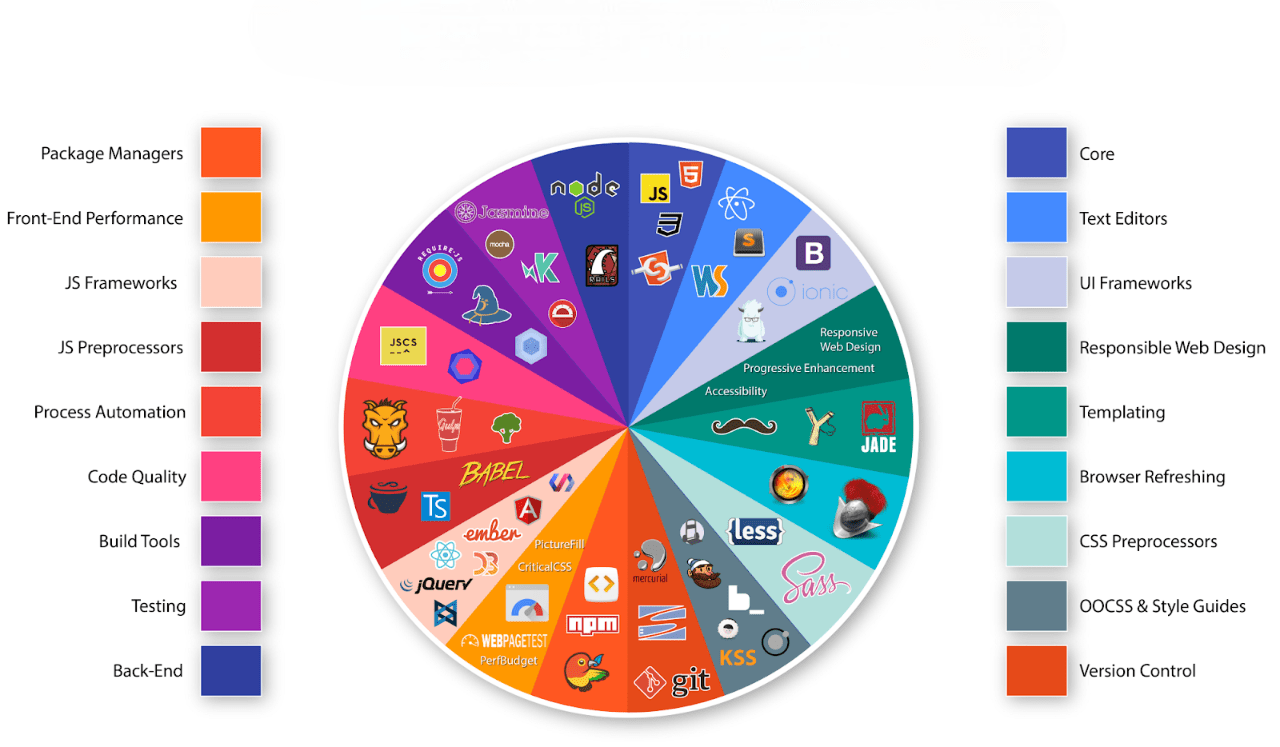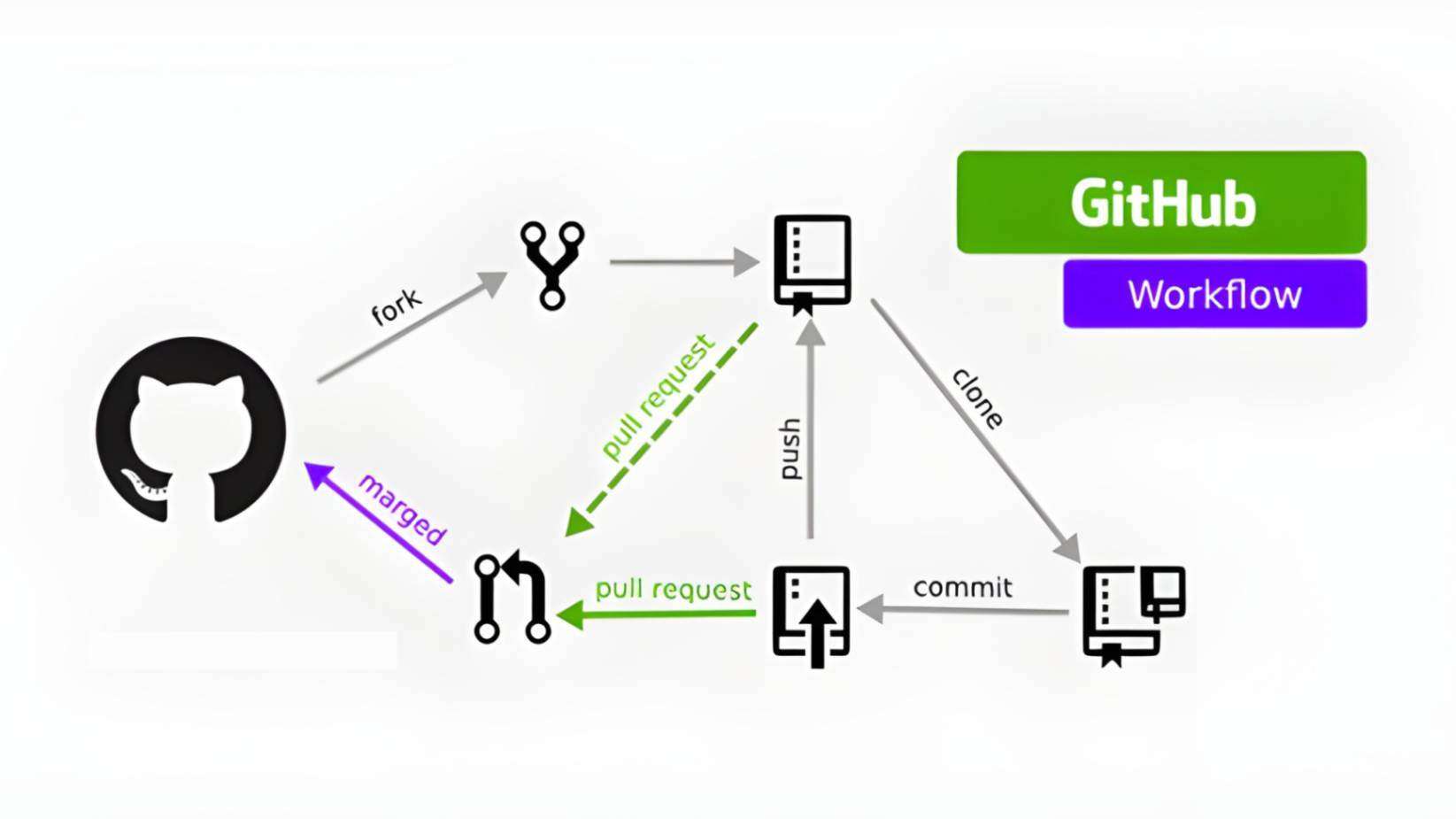
- Definition of Full Stack Development
- Frontend Technologies Overview
- Backend Technologies Overview
- Databases in Full Stack
- APIs and Middleware
- Role of Version Control (Git/GitHub)
- Deployment and Hosting
- Full Stack Developer Responsibilities
- Benefits of Full Stack Development
- Tools and IDEs Used
- Learning Path for Beginners
- Career Scope and Opportunities
Definition of Full Stack Development
Full-stack development refers to the comprehensive process of building both the frontend (client-side) and backend (server-side) components of a web application, requiring a diverse skill set that spans the entire technology stack. A Full-Stack Developer is equipped to handle everything from designing and coding interactive, user-friendly interfaces using technologies such as HTML, CSS, and JavaScript, to creating and managing server-side logic with languages like Node.js, Python, or PHP, as well as working with databases like MySQL, MongoDB, or PostgreSQL for efficient data storage and retrieval. This broad expertise allows full-stack developers to construct complete, fully functional web applications either independently or as part of a collaborative team. For those looking to build this skill set from the ground up, exploring Web Designing & Development Courses can provide a solid foundation and practical experience in both frontend and backend technologies. The term “full stack” implies an ability to manage the entire application architecture, enabling developers to contribute to every layer of development, from structuring the frontend design to integrating backend services and APIs, ensuring seamless communication between the user interface and the server. Full-stack developers often possess knowledge of version control systems like Git, understand deployment strategies, and are familiar with cloud services such as AWS, Azure, or Firebase for hosting and scaling applications. Their holistic understanding of the software development lifecycle allows them to identify and solve problems across the tech stack, making them valuable assets in agile development environments. With the rise of modern frameworks and tools, full-stack development continues to be a sought-after approach in the tech industry, promoting versatility, efficiency, and a deeper understanding of how various components of an application interact in real-world scenarios.
Frontend Technologies Overview
Frontend development deals with the part of the web application that users interact with directly. The primary technologies used in frontend development are:
- HTML (HyperText Markup Language): Provides the structure of web pages.
- CSS (Cascading Style Sheets): Handles the HTML elements’ styling, layout, and design.
- JavaScript: Adds interactivity and dynamic content to websites.
- React.js: A JavaScript library for building user interfaces developed by Facebook.
- Angular: A TypeScript-based open-source framework developed by Google.
- Vue.js: A progressive JavaScript framework for building UIs and single-page applications.
Modern frontend development has evolved to include advanced frameworks and libraries such as:
Frontend developers also use tools like Webpack, Babel, and frontend testing libraries to streamline development and ensure code quality.

Backend Technologies Overview
Backend Development handles the server-side logic, database interactions, and application functionality behind the scenes. The primary responsibilities include processing user requests, authentication, data validation, and business logic. While often associated with server and database operations, backend roles also sometimes intersect with frontend requirements understanding concepts like What is an HTML Iframe can be helpful when embedding content or supporting frontend integration. Standard backend technologies include:
- Node.js: A JavaScript runtime for building scalable and fast server-side applications.
- Python: Popular for its simplicity and powerful frameworks like Django and Flask.
- PHP: Widely used for web development, especially with WordPress and Laravel.
- Ruby on Rails: A full-stack framework that emphasizes convention over configuration.
- Java: Enterprise-level backend development using Spring Framework.
- REST APIs: To perform CRUD operations, use standard HTTP methods (GET, POST, PUT, DELETE).
- GraphQL: An alternative to REST that allows clients to query specific data, reducing over-fetching.
- Web Servers: These include Apache, Nginx, and cloud-based services.
- Hosting Platforms: Like AWS, Heroku, DigitalOcean, and Netlify.
- CI/CD Pipelines: Tools like Jenkins, GitHub Actions, and GitLab CI/CD automate testing and deployment.
- Containerization: Using Docker and Kubernetes to package and manage application environments.
- Designing and developing user interfaces using frontend technologies.
- Building scalable and secure backend services and APIs.
- Managing databases and ensuring data integrity.
- Integrating third-party services and APIs.
- Collaborating with UI/UX designers, product managers, and other developers.
- Writing clean, maintainable, and testable code.
- Ensuring cross-platform compatibility and mobile responsiveness.
- Monitoring application performance and fixing bugs.
- Managing deployments, CI/CD processes, and server maintenance.
- IDEs: VS Code, WebStorm, Sublime Text, IntelliJ IDEA, and Eclipse.
- Package Managers: npm (Node.js), pip (Python), Composer (PHP).
- Version Control Tools: Git, GitHub Desktop, SourceTree.
- Debugging Tools:Chrome DevTools, Postman, Fiddler.
- Containerization Tools: Docker, Kubernetes.
- Task Runners and Bundlers: Webpack, Gulp, Grunt.
- Testing Tools: Jest, Mocha, Jasmine, Selenium.
- Learn HTML, CSS, and JavaScript: Build a strong web design and scripting foundation.
- Master a Frontend Framework: Choose React, Angular, or Vue for dynamic web applications.
- Understand Backend Development: Learn server-side languages like Node.js or Python.
- Database Management: Start with SQL and explore NoSQL options like MongoDB.
- Build Projects: Apply skills by building CRUD applications, blogs, or e-commerce sites.
- Version Control: Learn Git and GitHub to manage code and collaborate.
- APIs and Middleware: Understand how to create and consume RESTful APIs.
- Deployment: Host applications on platforms like Heroku, Netlify, or AWS.
- Explore Advanced Topics: Authentication, security practices, caching, CI/CD.
- Join Developer Communities: Engage in forums, contribute to open source, and seek mentorship.
- Full Stack Web Developer
- Frontend/Backend Developer
- Software Engineer
- DevOps Engineer
- Technical Lead or Architect
These languages work alongside web servers (Apache, Nginx) and frameworks to provide a seamless user experience.
Databases in Full Stack
Databases are essential for efficiently storing, retrieving, and managing data, making them a fundamental component of full-stack development. Full Stack Developers should have a strong understanding of both relational and NoSQL databases. Relational databases, such as MySQL, PostgreSQL, and Microsoft SQL Server, use structured schemas and rely on SQL for data manipulation and queries. On the other hand, NoSQL databases like MongoDB, Cassandra, and Firebase are designed to handle unstructured or semi-structured data, offering greater flexibility in terms of data modeling. Choosing the right database solution often depends on the tech stack being used understanding the differences in MEAN vs MERN Stack Development can help developers align database choices with application architecture and performance goals. In addition to understanding the types of databases, developers must also be proficient in core concepts such as database design, normalization, indexing, and performance optimization to ensure efficient and scalable applications. To streamline and simplify database interactions, developers often utilize Object Relational Mappers (ORMs) like Sequelize for Node.js, SQLAlchemy for Python, and Hibernate for Java, which allow for more intuitive and maintainable code when working with databases.
Excited to Obtaining Your web developer Certificate? View The web developer course Offered By ACTE Right Now!
APIs and Middleware
APIs (Application Programming Interfaces) act as intermediaries that allow different software components to communicate. Full-stack developers create and consume RESTful or GraphQL APIs to integrate the front and back end seamlessly.
Middleware refers to software that connects different applications or components. In backend frameworks like Express.js, middleware functions process requests before they reach the route handlers, providing services like authentication, logging, and error handling.
Interested in Pursuing Web Developer Master’s Program? Enroll For Web developer course Today!
Role of Version Control (Git/GitHub)
Version control is essential for managing code changes and enabling effective collaboration among developers. Git is the most widely used version control system, offering powerful features such as tracking changes to the codebase, reverting to previous versions, and supporting simultaneous development of multiple features through the use of branches. For those looking to formalize their expertise and gain recognition in the field, earning a Web Developer Certification can be a strategic step that validates their skills and boosts professional credibility. Platforms like GitHub, GitLab, and Bitbucket serve as hosting services for Git repositories and provide additional tools, including issue tracking, pull requests, code reviews, and continuous integration/continuous deployment (CI/CD) pipelines. A solid understanding of Git workflows, such as Git Flow, Feature Branch Workflow, and Forking Workflow, is crucial for maintaining an organized development process, especially in team environments where collaboration and consistency are key to project success.

Deployment and Hosting
Deployment transfers the application from the development environment to a live server where users can access it. Full Stack Developers should be comfortable with the following:
Knowledge of domains, SSL certificates, DNS configuration, and server management is also essential.
Full Stack Developer Responsibilities
A Stack Developer’s responsibilities span multiple layers of application development. Key duties include:
They must possess strong problem-solving skills, adaptability, and a continuous learning mindset.
Benefits of Full Stack Development
Complete Stack Development offers numerous advantages, particularly in agile and startup environments where flexibility and speed are crucial. One of the key benefits is versatility, as developers skilled in both frontend and backend technologies can contribute to all aspects of a project. This reduces the need for highly specialized roles, resulting in faster development cycles and greater cost efficiency since fewer developers are required to build and maintain a complete product. For those looking to build or refine these skills, following a well-structured Web Developer Roadmap can provide clear direction and help streamline the learning journey. Full Stack Developers also facilitate improved communication within teams, as they understand the entire technology stack, which enhances collaboration between different parts of the project. Their ability to diagnose and resolve issues across the full stack leads to better problem-solving and more efficient debugging. Additionally, career opportunities for Full Stack Developers remain consistently high across various industries, making this skill set both valuable and in demand. Overall, this approach fosters a holistic understanding of web development, empowering developers to be more resourceful and impactful in their roles.
Tools and IDEs Used
Full Stack Developers utilize a variety of tools and integrated development environments (IDEs) to enhance productivity:
Familiarity with these tools streamlines development, testing, and deployment processes.
Learning Path for Beginners
Beginners aspiring to become Full Stack Developers should follow a structured path:
Persistence and continuous learning are vital to mastering the whole stack.
Career Scope and Opportunities
The career outlook for Full Stack Developers is auspicious. Organizations value professionals who can bridge the gap between frontend and backend roles. Opportunities include:
Industries hiring Full Stack Developers include IT services, e-commerce, fintech, healthcare, and edtech. These roles often come with competitive salaries, remote work opportunities, and clear paths for career advancement. For those aiming to strengthen their skills and stand out in a competitive job market, enrolling in Web Designing Training can provide valuable frontend expertise that complements full-stack capabilities. Certifications, a strong portfolio, and continuous learning can significantly enhance career prospects. Whether working in dynamic startups or established MNCs, Full-Stack Developers continue to play a critical role in driving innovation, building scalable solutions, and contributing to the efficiency of modern tech teams.

